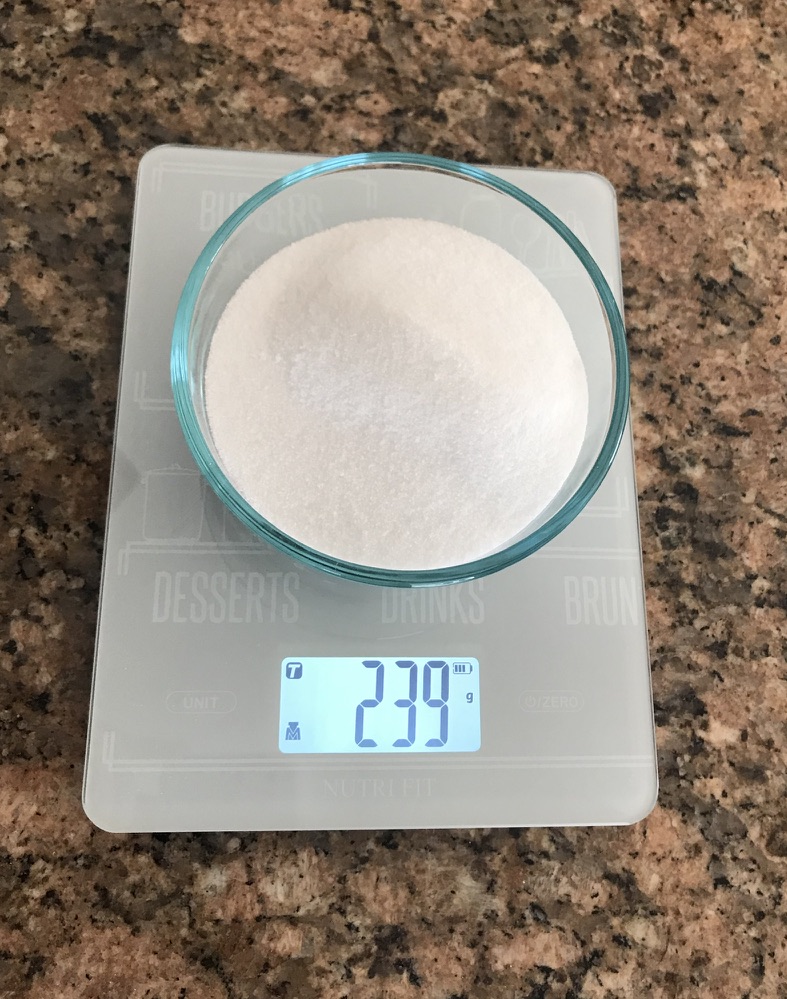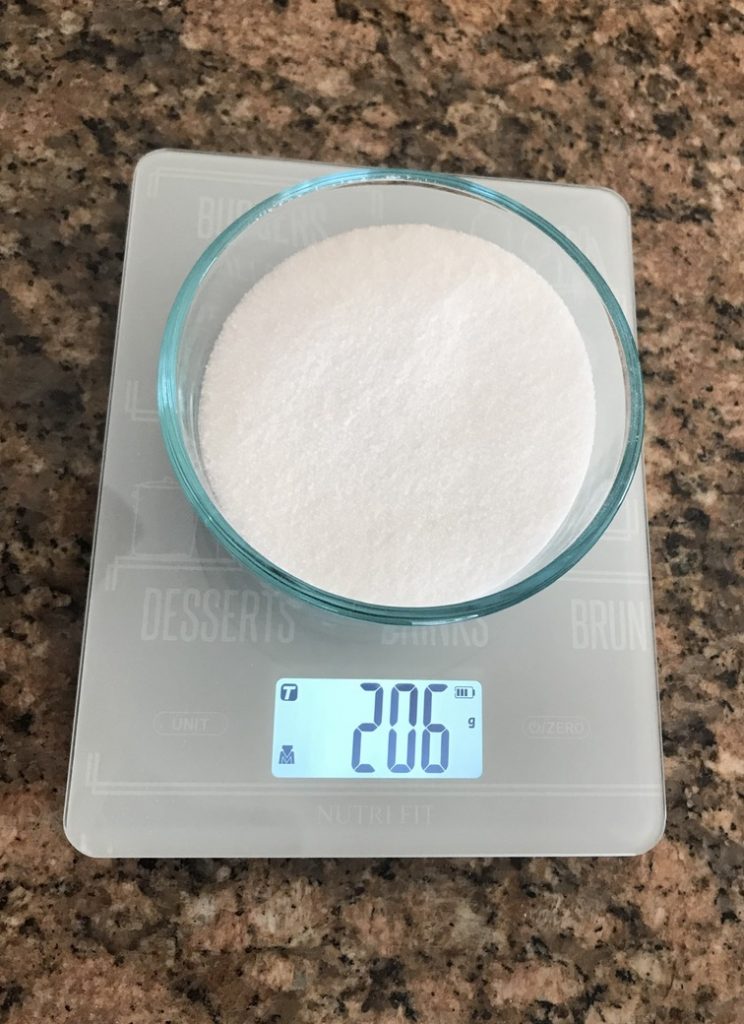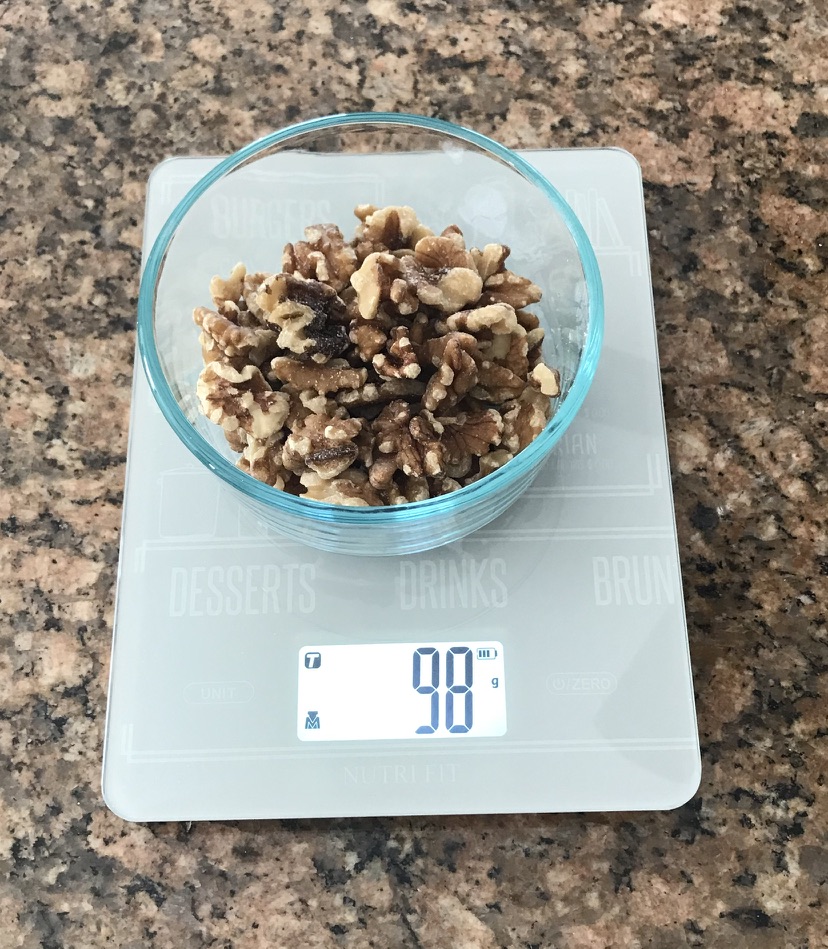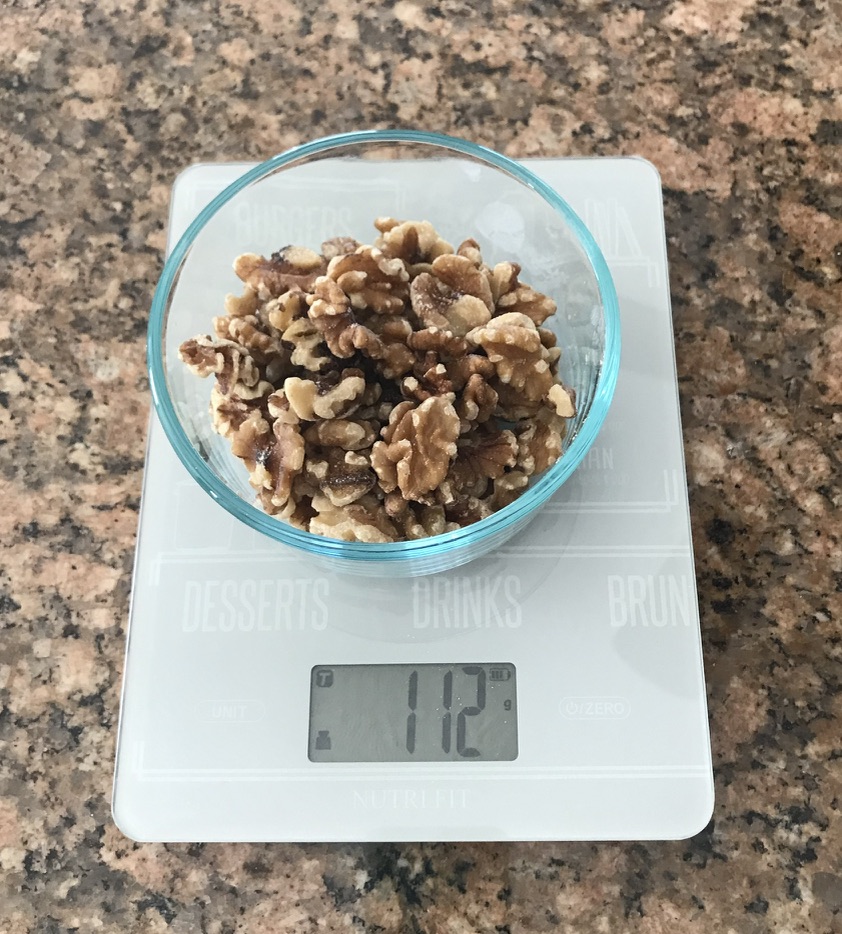Let’s discuss why you should switch to weighing ingredients when baking. When you bake a cake, bread or cookie recipe, it’s not uncommon to get varying results from batch to batch.
A famous thing to do is to blame the weather, especially when making bread. The recipes for a basic white bread often say something along the lines of: “use between 2 3/4 – 3 1/2 cups of flour.” This often results in a soggy interior or a heavy, dense loaf.
This is not uncommon to see. Every American baker has struggled with bread recipes using these variations in flour. Even with solid measurements like 3 1/4 cups, there seems to be the need to add more and more flour. In comes using a digital scale versus cups.
I started watching British baking shows while recovering from an illness and noticed they always weighed their ingredients. I started poking around and found that most countries (like 95%) weigh their ingredients and use the metric system. We are the lazy ones who rely on cups and spoons.
This would be okay if we could consistently measure our ingredients. But then there is the fact that each brand of flour, sugar and other dry ingredients can weigh different amounts in the same measuring cup. I put it to the test. Pictured below were my results with just few common ingredients I use: flour, sugar, and walnuts.
The sugar was the most surprising to me. And when you are trying to cut calories, that variation in cup to cup can mean hundreds of unwanted calories in a recipe.
Once I began the switch to weighing ingredients, I have had excellent results on things I struggled with for years. Bread is fabulous every time. I will continue to provide American measurements for everyone. However, my baking is all done through weighing ingredients, so your results may differ if you continue to use cups and spoons.
Keep in mind if you want the same results I get, especially with breads, invest in a digital scale. You can get them for around $10 and you’ll be thrilled with your baking from this point on.







0 Comments